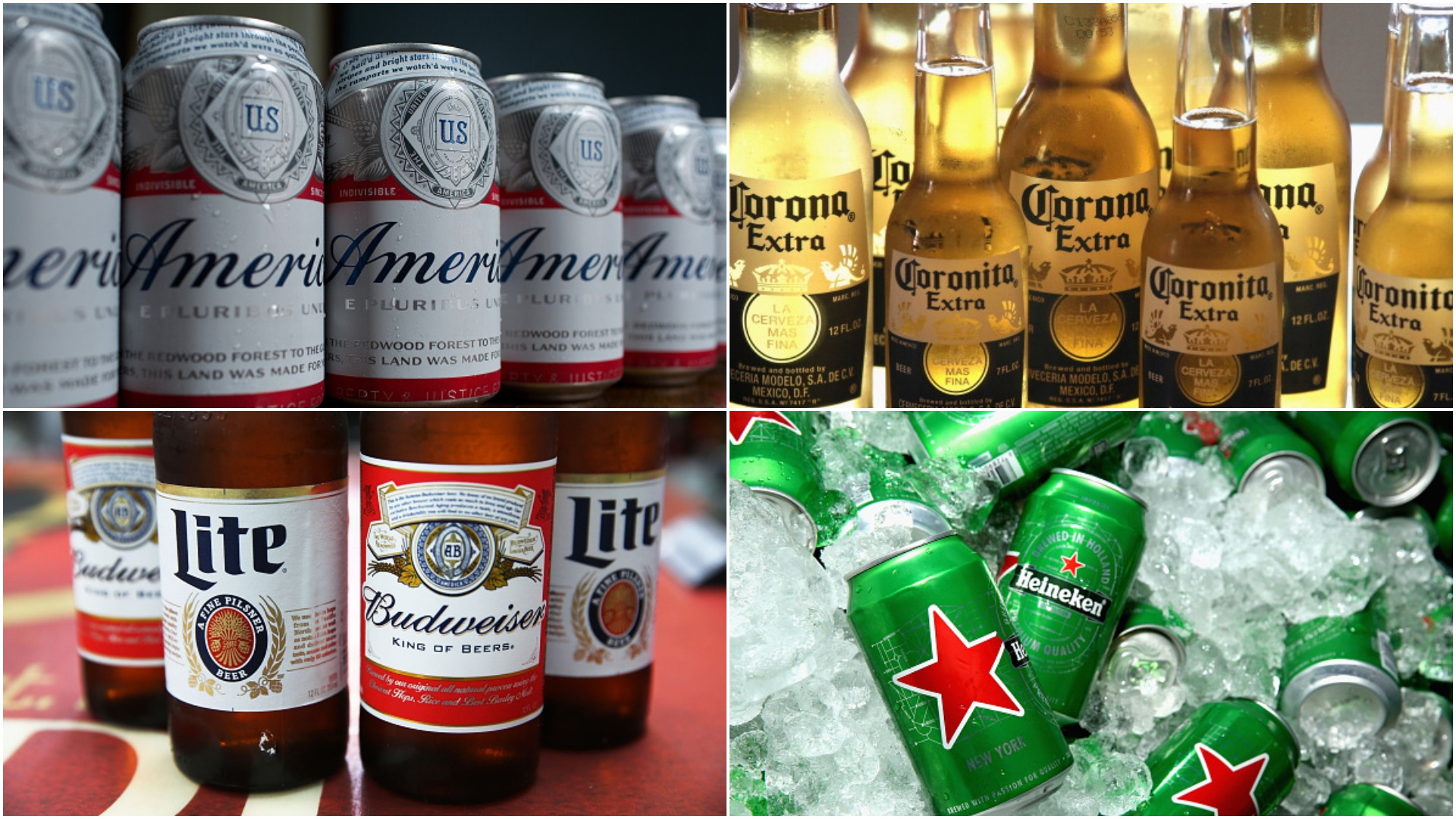Does Beer Taste Better From A Can Or Bottle?
Are we really still questioning the merits of canned beer? In 2018? I guess we are, because I recently came across a comment on one of my Beer Of The Week columns informing me that the beer I was recommending must be total crap because it comes in a can, not a bottle. To that commenter: 2003 called and it wants its misinformed beer opinions back.
Despite much evidence to the contrary, some people continue to believe that bottles are in and of themselves a sign of beer quality. It's a misconception left over from decades ago when premium and "imported beer" brands—remember when that was a phrase people used unironically?—tried to sell Americans on their superiority to pop-top cans. Bottled beers were priced higher than canned beer, and advertising departments worked to convince drinkers this is because bottles meant higher-quality beer. Can bad. Bottle fancy. Bottle better.
This hasn't been true for decades—if it ever was. We're long past the days when only domestic light lagers came in cans. (Dry-hopped Berliner weisse with sauvignon blanc grapes from a can, anyone?) Cans have a number of advantages over bottles, some of which have to do with keeping beer fresh. Let's break them down for the naysayers:
Cans keep light out completely.
Light exposure is the enemy of fresh beer, because when light hits beer, it causes oxidation and the dreaded "skunked" flavors. Brown bottles are better at keeping light out than green or clear bottles—the green bottles are part of the reason Heineken is notorious for its skunked aroma—but cans are better than all of them. Light can't penetrate aluminum, giving them a big advantage in terms of freshness.
Cans are well-sealed.
This aspect probably doesn't matter much if you're drinking beer within the first three or four months it's packaged—the recommended shelf life for most beer—but can make a difference over a long period of time. A bottle with a cork still allows for micro amounts of oxygen to enter the bottle in a process called micro-oxidation; that's why Belgian beers that still have residual yeast in the bottle will continue to ferment slightly and "age" in your cellar. In the case of bottle-conditioned Belgian beers, that's a good thing, but if you want a 100 percent sealed vessel, a can is it. (The jury is still out on how much micro-oxidation occurs in a bottle with a regular beer cap. The regular beer cap is a single seal on a plastic-type material; beer cans are a double seal, theoretically giving twice the oxygen protection.)
Canning technology has improved in the last decade.
This is true, especially in regards to how much oxygen it leaves in the package. Total packaged oxygen (TPO) is a measure of how much oxygen is left in the liquid itself—dissolved oxygen—plus how much is left in the headspace of the can or bottle. The higher the dissolved oxygen and/or TPO, the faster that beer's aromas and flavors will break down. When it comes to packaging, oxygen is the enemy. "The technology has gotten so good on the can-filling side," says Matt Brynildson, brewmaster at Firestone Walker Brewing Company in Paso Robles, California. "I think it used to be that bottles always had lower dissolved oxygen rates than cans, but now our canning lines runs right on track with our bottling line, if not ahead of it, in terms of total packaged oxygen."
Can manufacturers are ditching BPA.
Consumers don't want BPA in their water bottles, and they probably don't want it in beer cans, either. Previously, BPA was used in the interior coatings of most beer cans, but now companies have come up with BPA-NI (BPA-non-intent) can liners. Many craft beer makers have since switched over, especially those in California where products packaged with BPA must carry a warning.
That metallic taste in your beer isn’t coming from cans.
Can critics swear aluminum packaging leaves a metallic taste in beer, but cans are lined (see above) and metallic tastes can be the result of problems during brewing—not packaging. If beer comes into contact with anything less than stainless steel, it can leach metallic flavors during the brewing process, which isn't much of a problem these days, as most professional breweries use stainless steel. Water chemistry or improperly stored brewing grains could also produce off-flavors one could describe as metallic.
Aside from cans' technical merits, I tend to choose canned beer because they're just more convenient. They're lightweight; the six-packs stack easily in my fridge; I can take cans hiking or on the water where I wouldn't want glass; and they're easier to recycle through my local recycling program.
"It's becoming the more expected package for beer," Brian Strumke, founder of Baltimore- and Brooklyn-based Stillwater Artisanal Ales, tells me. (His is the brewery that cans the dry-hopped Berliner weisse with sauvignon blanc grapes I mentioned earlier.) "It's the most environmentally responsible package, I think, at the moment. It's lighter for shipping; it's more compact for recycling."
So, even if you don't trust my opinion on cans, you can't argue that they're not brewer-approved.
"I don't take bottles home unless it's a beer we only put in bottles," Brynildson tells me. "If people can just get over that stigma that there's a quality difference—it's a perceived-value aspect our parents were taught based on pricing, probably—there's no compelling reason to go for bottles over cans."
